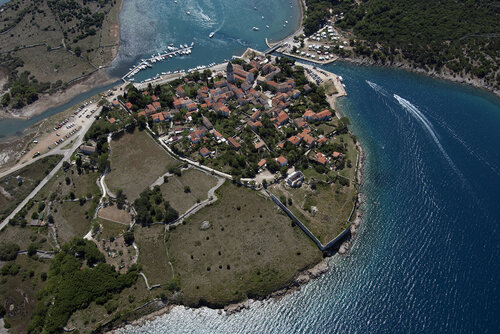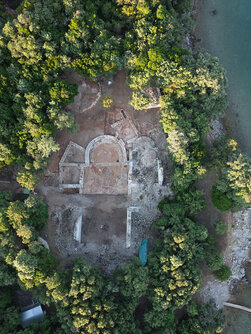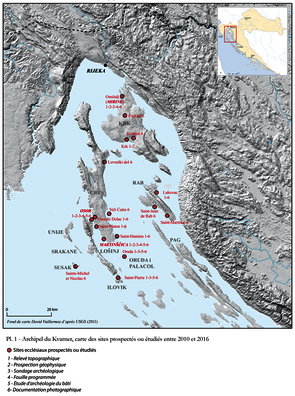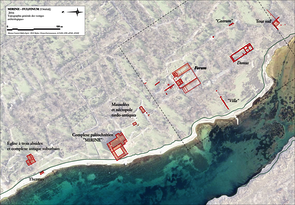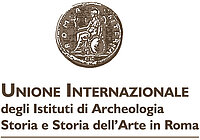KVARNER. Archaeological and historical studies of island monasteries and ecclesial sites of Late Antiquity and the Early Middle Ages in the historic Dalmatian area: the example of the Kvarner archipelago (Croatia)
- Section: Middle Ages
- Director: Sébastien Bully, researcher and Deputy Director CNRS-UMR ArTeHiS 6298, lecturer, University of Burgundy Franche-Comté, Dijon-Auxerre; Morana Cauševic-Bully, lecturer, University of Burgundy Franche-Comté-UMR Chrono-Environnement 6249, Besançon; Stéphane Gioanni, professor, University of Lyon II
Presentation
Our research programme builds on the achievements of the "Monachisme insulaire dans le Kvarner du Ve au XIe siècle” (Insular Monasticism in the Kvarner from the 5th to 11th century) conducted between 2010 and 2014 and dedicated to a survey of sites and ecclesiastical complexes, which are potentially monastic. The new programme is devoted to the completion of the archaeological study of Saint Peter's monastery in Osor and to the development of planned excavations on the Martinšćica and Mirine complexes in Omišalj. In this second part, the scope is that of historical research on the origin of monastic establishments, on their relations with the different powers and the networks to which they belong.
STATE OF THE ART
Compared with other European countries, Croatian research has done little to address the issue of monasticism and monasteries. The reason for this lack of interest in monastic archaeology - in the sense of a general understanding of a topography and the genesis of an architectural complex - on the Croatian Adriatic coast is probably linked to the nature of the remains, their state of conservation and the difficulty of understanding structures and devices which do not necessarily refer to models or diagrams known elsewhere. The lack of written sources for early periods limits our knowledge of the monastic landscape. But in recent years, in addition to new field research, three international conferences have marked a new interest in the "monastic fact" in all its diversity, archaeological as well as historical, in the Adriatic space and more particularly in Croatia.
SCIENTIFIC INTEREST
The terms and conditions of the distribution of a first monasticism in late antiquity until the arrival of the Benedictines between the 9th and 11th centuries on the Croatian coast, are key scientific problems. One of the main difficulties is the actual identification of monastic complexes within the large number of ecclesial sites on the Croatian coast, whose functions may be very different. The question which also arises is that of the possible transition from one function to another. This difficulty also results from the definition of a monastery, as the acceptance of this denomination covers architectural realities, religious practices, uses or different statutes depending on places and periods.
We suggest a research and analysis programme based on the sites on several levels: that of the monument, the complex to which it belongs, and the landscape/space in which it is situated.
Keywords
Croatia; Kvarner; Isle; archipelago; Krk; Cres; Rab; insular; Late Antiquity; early Middle Ages; church; monastery; ecclesial complex.
Key statistics
- Four French scientific partners
- Four local scientific partners
- Participation of five doctoral students in the excavation and post-excavation over the duration of the 5 year project
- Participation in excavation of more than 30 students over the duration of the 5 year project
- Funding from seven French and foreign partners
Calendar of events for 2017
- April 2017 - Excavations at the Mirine- Fulfinum site (island of Krk)
- June 2017 - Excavations at the Martinšćica site (island of Cres)
- July 2017 - Excavations at the Saint-Pierre d'Osor site (island of Cres)
- May 2017 - preparatory meeting for ANR project
- September 2017- 2nd preparatory meeting of ANR
Partners
Scientific partners
- Association aIPAK
- Association APAHJ
- Bradford isotope Laboratory, University of Bradford, Royaume-Uni
- Department of Archeology at the Université de Zagreb
- École française de Rome
- IRCLAMA (International Research Center for Late Antiquity and Middle Ages) of the Université de Zagreb
- Musée de Mali Lošinj
- Museum of Croatian Archaeological Monuments
- UMR 5189 HISOMA
- UMR 6249 Chrono-Environnement
- UMR 6298 ARTeHIS
Financings
- Municipality of Omišalj
- École française de Rome
- Private foundation
- Ministry of Culture of Croatia
- French Ministry of Foreign Affairs and International Development
- Primorsko-goranska region
- City of Mali Lošinj

